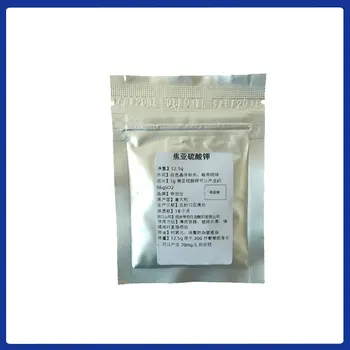The upper limit of the free sulfur dioxide in wine is set by law. If only this is exceeded, the wine is not fit for consumption or market, so it is crucial that we closely follow the amounts of sulfur in our wine throughout the entire production process. Only in this way will your wine mature properly, develop a varietal aroma and bouquet, and, more importantly, not cause you any other headaches!
The amount of free sulfur in musts or wines from grapes and other fruits is most quickly and easily measured with the help of commercial reagents, which are basically a combination of sulfuric acid, potassium iodide, iodine, and starch in various proportions that determine the quality of the reagent and the measurements.
The procedure for determining the amount of free sulfur using a reagent for measuring free SO2 is presented below.
Analysis Of Free Sulfur Dioxide in Wine
The kit usually contains a test tube with an appropriate scale to read the free sulfur level in the sample, the reagent itself (a combination of sulfuric acid, potassium iodide, iodine, and starch), and a pipette to add the reagent to the sample.
1. Shake the reagent bottle well before measuring. Rinse the tube with the wine you measure before use, then fill it with the wine sample to the beginning of the scale (marked with 0 – zero). It is best to keep the measuring tube at eye level and ensure that the lower level of the wine touches the measuring scale.
2. This is followed by titration with the reagent, which is carefully added dropwise to the measuring tube. When adding the reagent, close the tube with your thumb, turn it upside down to mix the contents, and continue adding the reagent and stirring until the tube’s entire contents or pattern is colored purple-blue. The color must last for at least 10 seconds.
3. Read the result: The result, which tells us the amount of free sulfuric acid in the sample in mg / L, is read on the black scale of the test tube (red is usually used to determine the level of titratable acids). After use, close the reagent bottle tightly and store it in a cool, dry place.
Results of Analysis Of Free Sulfur Dioxide in Wine
The wine contains approximately 5-10 mg / L of reductones (mainly ascorbic acid), representing 3-5 mg / L of free sulfuric acid. Therefore, in practice, it is considered that in wine which, according to the analysis, has less than 5 mg / L of free sulfuric acid, it is not present in the wine at all. We need to pay special attention to this in fruit wines, as some fruit types contain a large amount of ascorbic acid.
The amount of sulfur depends on many factors, so the orientation should be:
White wines need 20-32 mg / L of free sulfuric acid.
Red wines need 15-20 mg / L of free sulfuric acid.
The amounts of free SO2 depend primarily on the type of wine, age, and health status.
NOTES:
The temperature of the sample at the time of measurement should be 20 C.
After use, the tube and pipette should be rinsed with distilled water to prevent dried sediment.
Measurements are performed at the source of yellow light.
Keep the reagent out of the reach of children.
We also enclose a table of STANDARDS for the sulfurization of 100L of wine by various means.
| Sulfur Norm | Tape 3g | Dust | Liquid | Gas |
| Very Mild 1,5g SO2/hL | 0,5 | 3g | 30ml | 1,5g |
| Mild 2,5g SO2/hL | 0,83 | 5mg | 50ml | 3g |
| Medium 5,0mg SO2/hL | 1,66 | 10mg | 100ml | 5g |
| Strongly 7,5mg SO2/hL | 2,5 | 15mg | 150ml | 7,5g |
| Very Strong 10,0mg SO2/hL | 3,33 | 20mg | 200ml | 10,0g |
